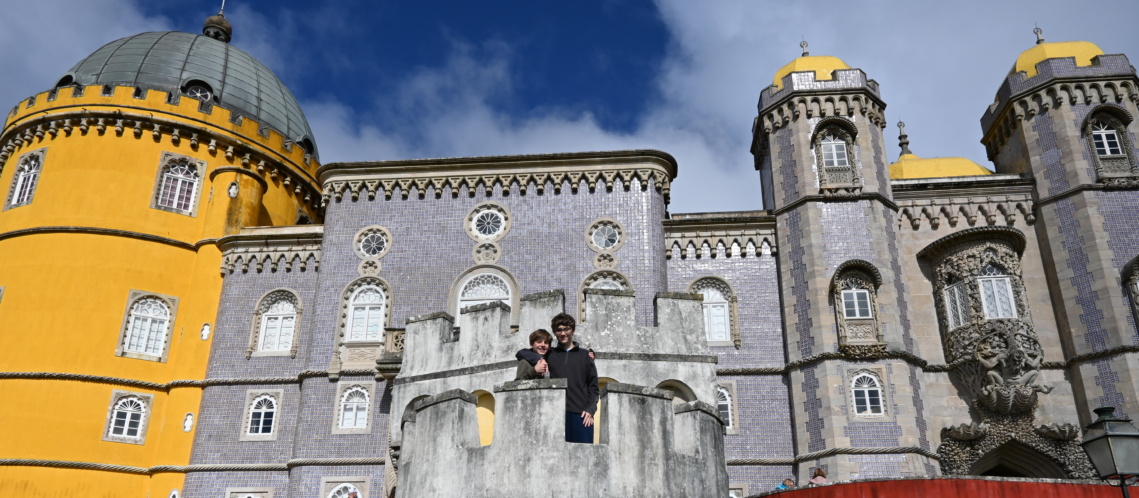Portugal is a bit of a hidden gem in Europe. It is less visited than its Western European neighbors of Spain, France and Italy but is gaining in popularity as more and more people discover how much it has to offer. For a small country, it has huge diversity – incredible cities, gorgeous river and mountain scenery, stunning cliffside beaches. If it is not already on your European travel list, it should be.
Visit as much of the country as you can.
Portugal is roughly 150 miles north to south and 135 miles east to west, making it relatively easy to visit a lot of the country on one trip. With at least 10 days you can plan a trip covering the area from Porto and the Douro Valley in the north to the Algarve in the south. With fewer than 10 days, I would focus on only two main areas, typically choosing between Porto, Lisbon, and the Algarve.
Use public transportation.
Public transportation in Portugal is super easy to navigate, cheap, and safe. We used high speed trains to get between cities and various forms of the metro (train, trolley, bus) within the cities. It’s always a little nerve-wracking to figure out how to get around in a foreign country at first but we picked up on it quickly and had no issues.
Use tour guides for selected sites or cities.
There is a lot of the country that you can explore on your own but there are also cases where a tour guide can add a lot of value to your experience. We had about half our days on our own and half with a guide and I thought that was a great mix.
Transfer tours are a great way to see some bonus parts of the country.
We didn’t have enough time in our trip to add entire days in Aveiro, Nazaré, or Óbidos but we were able to visit them all in a single day while transferring from Porto to the Lisbon area using Porto Tours and Transfers. This was such a great use of our travel day. When you need to get between cities quickly, the trains are great. But when you have the time to stop and explore along the way, transfer tours give you the opportunity to see places you otherwise would not get to see.
Be prepared for hills.
Porto and Lisbon have hills. Lots of them. They can be slippery when wet and grueling to climb under all conditions. Bring shoes with good tread and your energy.
Avoid summer if possible.
I know this is a tough one for a lot of families that are a slave to the school calendar. But we went over our spring break and thought it was an ideal time. The weather was great and nothing was too crowded. Summer is famously hot and crowded, especially in the Algarve. Of course the water was also too cold to swim while we were in Lagos but for us that wasn’t a priority on the trip and we were glad to have avoided the crowds and heat of the high season.
Beware of business hours.
When we sat down at 6pm for our first dinner in Porto, we were surprised (and hangry) when we found out that the kitchen wasn’t open yet and they were only selling pre-made sandwiches and bakery items. Most restaurants close after lunch and don’t reopen for dinner until 8 or even 9pm. This was challenging for us (especially with the time difference) but we adjusted by having later lunches and snacking throughout the day.
Appetizers in restaurants are not free.
It is common for waiters to automatically bring bread, cheese, and/or olives to your table. Known as couvert, there is a charge for these small appetizer dishes even though you didn’t order them. If you don’t want them, you can send them back with the waiter. If you keep them, there will be a small charge added to your bill.
Don’t miss the pastel de nata.
Pastel de nata is the classic Portuguese pastry. Created in the 18th century by the monks at Mosteiro dos Jerónimos, these egg tarts have a flaky shell and a rich custard filling. Everyone raves about them and they were available at every hotel breakfast we had and in the window of every bakery we passed. I liked them but the rest of the family thought they were just ok. Regardless, you can’t come to Portugal without trying one.
Use the ATMs wisely.
We were able to use our credit cards at most restaurants and stores (be sure to use one with no foreign transaction fees if you have one) but cash was definitely still needed on the trip. We didn’t get any Euros before the trip but just used an ATM as soon as we arrived in the airport and then whenever we needed more cash. Be sure to only use the MultiBanco ATMs. Euronet ATMs charge huge fees and should be avoided if it all possible. Also, when withdrawing money always decline the ATM currency conversion and let your bank do the conversion for you. You will get a better conversion rate that way.
